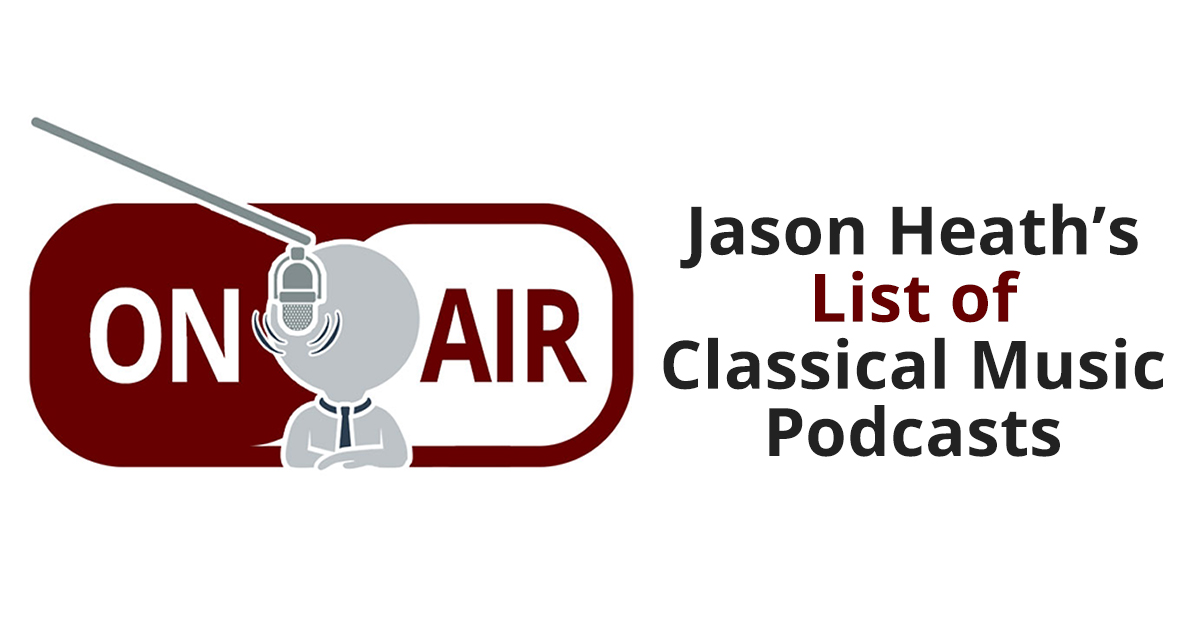
TAFTO wouldn’t be complete without a
patron contribution and this year that role is being filled by Ben Smith. Everything you need to know about Ben can be summed up in the name of his website: classicalconvert.com. As Ben describes it, he wanted to create a beginner’s guide to classical music, by someone who switched at 23. There is nothing I can convey about Ben that is better than the opening paragraph which welcomes all those who find their way to his website:
"This site is aimed at people who want to get into classical music. It’s
hopefully just right for someone who can recognize a couple of pieces
(the da-da-da-dum of Beethoven’s fifth for example), and who might
stick on a CD for a pleasant background to work to, but would basically
consider themselves a beginner when it comes to classical music."
Ben embodies everything that is TAFTO and if classical music has a bright future in store, it will be due in large part because of folks just like him…

Three years ago I was a classical newbie. The day I started to switch was just a hair after my 24th birthday, and three years further on it is a process very much in development. Before that transition point I had barely more than a baseline exposure to the genre, being able to recognize Beethoven’s fifth (well, as long as it was the first movement) and listening to each of the three classical CDs in my collection for perhaps a few hours each year, if they were lucky. Classical music was something to daintily dip my toes into, not to dive under.
The big hook happened when the second Saint-Saëns piano concerto was playing as an unobtrusive canvas to schoolwork. I can still clearly recall the music pouncing from the background into the foreground, and myself being quite surprised by this sudden exposure. There was a long, continuous melody! It wasn’t at all just a lot of random orchestral noodling! Those gripping little melodic baby-teeth were the start of my conversion process. By the end of the week I had ordered all five of the piano concertos, and it all rolled on from there rather quickly.
So why did it take me so long to switch? Well, there were two particularly unexpected things that became apparent during this process, two things which had I known previously would have made me way more likely to experiment earlier. The first was the variety of subgenres, that it wasn’t all Bach and Beethoven and Mozart. I discovered that twentieth century classical music exists and is particularly aligned with my preferences. The second surprise — and the most important — was that it takes a lot of listening before a classical piece makes any sense. It sounds so obvious in hindsight, but back then I simply did not realize that if I kept listening to a classical piece I could “get” it in a similar way to my other music. There are melodies you can follow through and watch as they writhe and twist and tangle. It just takes a little longer to see them.
I think that this is really important to convey to the first time concertgoer, to let them know that classical music can be pretty overwhelming the first few times you hear a piece, but on the third or fourth or tenth listen all kinds of awesome things are going to start unexpectedly popping out. Of course at a concert you only get to listen to the pieces once, straight through, no rewinding. This means that if you’ve never heard the piece before you’re going to have a really hard time making tons of sense out of it. The key is that if you are expecting this to be the case, then it isn’t going to bother you as much. If new listeners are aware that it’s really hard to get a piece the first time through they are less likely to think: “Well, this is sort of pretty, but it doesn’t quite make sense the way other music does. I guess classical isn’t right for me.”
Of course, if they have a love-at-first-listen experience then that’s spectacularly awesome, and I am jealous. Otherwise though, I think the goal of a starting concert for a newbie should be to present as wide a selection of music as possible, while providing lots of little hooks to draw them in and convince them to keep on listening to classical after the concert is over. Given these goals there are a few things that would have been fantastic for my own early experiences:
- Not too much of any individual piece. Coming from a non-classical background means that sitting stationary for upwards of half an hour listening to a single composition is sort of pushing one’s concentration limits. While it might work out if it’s a wonderful performance, and the piece played happens to juxtapose nicely with the listeners personal preferences, a huge Mahler symphony (for example) probably isn’t the right way to go. It’s pretty off-putting to be sitting fiddling your fingers and wondering why everyone else is enjoying themselves when you were ready for something new after the first twenty minutes of the first movement. Of course, this is mostly common sense, but sometimes this is hard to remember when you’ve fallen in love with a piece and think everyone else should do the same.
- Go to something they probably haven’t heard. Initially I didn’t even really realize that there were any other genres than late Classical and early Romantic, which is kind of the popular view of what classical music is. By providing a wider buffet selection the probability gets increased that one of the items will be especially appealing to the new listener, something that will make them think “Wow! This is classical?” If I were selecting genres at a concert for my previous self to attend, I would try and cram in something late romantic, something atonal, something early and something late twentieth century (maybe Brahms, Berg, Shostakovich, Adams). I think most people already have a pretty good idea of what the Baroque, Classical and early Romantic periods sound like already, so it’s good to mix it up a bit. Don’t be afraid to have “difficult” pieces in there (like something atonal), as long as they are different.
- Make it memorable in subtle ways. Little hooks go a long, long way. One of my early concert experiences was a performance of Shostakovich’s eighth string quartet arranged as a chamber symphony. The memory of finding out about the DSCH motif still juts out dramatically as an instantly intriguing aspect. It made me feel like I actually understood what was going on, just a little bit. Having some little tidbit of information, some cool musically observable feature is a great aid for someone who kind of feels out of their depth to get a grip on things. It doesn’t have to be something quite as obvious as DSCH; the rather tragic story behind the Berg violin concerto is another more program-notey example of something which really gave me a connection to the music. Anything that gives an inroad into the unfamiliarity of the genre is wonderful.
Overall I think the goal to shoot for should be a post-concert Googling. That is to say, if the potential new listener is intrigued enough to search for more information on the composers or the specific pieces, then the concert was a success. Truly getting to grips with a classical piece takes a lot more time than a single concert provides, but there is ample opportunity for that later on. The most important thing is igniting that initial curiosity, and that is something you can directly aid with your choice of program, and by sharing your explanations, enthusiasm and passion for the music
-Ben Smith




Another of a series of excellent TAFTO postings, and I do not disagree.
I do, however, have a question.
Ben notes that it takes a number of hearings to get into most classical compositions.
So, how about exposing the novice, via recording, to some or all of the pieces that s/he is going to hear at the concert?
Paul
Hi Paul,
Personally I really like that idea, as long as there is truly enough time to do it together before the concert. That way there is likely to be even more things that the new listener can be listening out for during the real thing. One of the main reasons that I didn’t include this is because I know some people (my girlfriend included) really dislike hearing a recording of music that they shortly will be seeing performed live.
I guess the best thing to do would be to ask the friend if they are interested in doing a bit of pre-listening. If they are, I think it’s an excellent thing to do together.
Ben